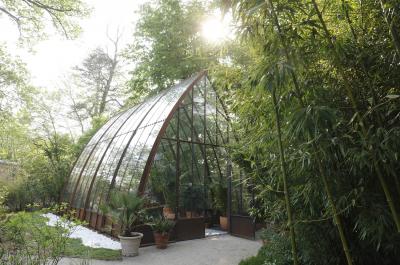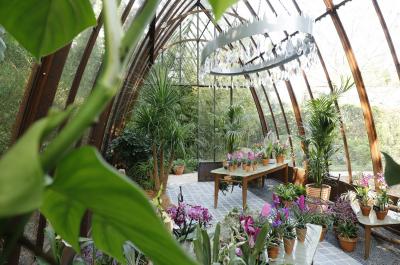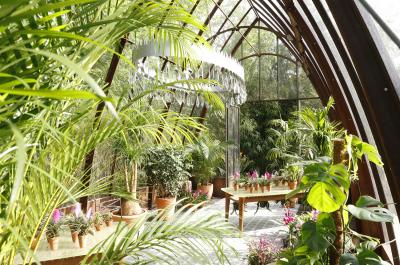La serre extraordinaire
The extraordinary greenhouse

This contemporary style greenhouse invites us to discover epiphytes and xerophytes, plants from the tropics and the planet’s dry habitats.
Epiphytes are air plants that live attached to other plants merely for physical support, without harming them. This is the case for many orchids, a plant often seen in our homes, and ferns such as those from the botanical genus Platycerium (from platys, broad and keras, horn): ferns of an often majestic appearance, with fronds (leaves) that are divided into large segments at the tip, suggesting a stag’s antlers, hence the name “staghorn” by which they are generally known.
Another example is the plant we call “Spanish moss” - which generally has a natural tendency to attach itself to a support - and which belongs to the Tillandsia genus (Bromeliad family). Originating from the American continent, they come in a variety of shapes and sizes and their odd appearance never fails to catch the eye.
As for xerophytes, these plants are capable of living in mostly-arid areas or habitats that are physiologically dry. One example is the Cactus family, which includes succulents and certain perennial plants that are capable of storing fluid in their tissues to survive the long periods of drought that characterise their natural habitat. Cacti thrive in the sandy, arid soils that they share with scrub vegetation, or among rocks, where their long, tough rhizomes dig deep into the crevices. In the arid, mountainous parts of the planet, cacti grow fluff of a length and density that increase with the elevation, while their spines lengthen and become more intimidating, as if to say “Don’t touch me!”.


